Light Sources

DOE Light source facilities are probing materials and devices with unprecedented temporal and structural resolution. TID is working with facilities at SLAC, the DOE complex and collaborators to develop new technologies for improving these system’s capabilities and for developing the next generation of light sources.
Key Competencies
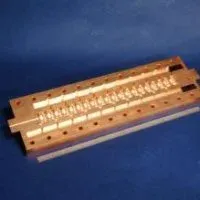
Accelerator Design, Integration, Test
TID has the capability to perform in house design, fabrication, integration and experimental test for complete accelerator systems. Our focus is on the development and incorporation of new concepts to significantly advance the cost-capability a accelerators systems, by forming strong partnerships with our government, non-profit or commercial partners.
Advanced Fabrication/Prototyping & RF Fabrication
TID staff operate and maintain a prototype fabrication facility (~22,500 ft2) that includes thin film vacuum coating systems (evaporative and sputtering); precision conventional and CNC machining and metal forming for ultra-high vacuum and high-gradient application components; metrology (optical, scanning electron microscopy, and coordinate measurement machines); metal joining equipment including vacuum brazing, dry and wet hydrogen brazing, diffusion bonding, tungsten inert gas welding and clean spot welding; heat treating (annealing, hardening, tempering, and air firing); vacuum processing including high temperature vacuum firing, bake-out, and leak detection.
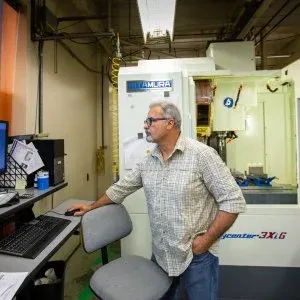
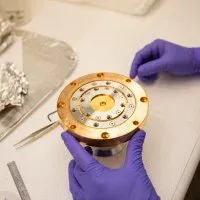
High Gradient Electron/Hadron/Ion Accelerator Technology
We are applying novel concepts for high-gradient structure-based accelerator technology that have demonstrated record gradients and both microwave and mm-wave/THz frequencies. These advanced concepts, such as distributed coupling accelerators, dramatically increase the efficiency of accelerator for both relativistic and low-beta particles, and can be applied to both electron and ion accelerators. Exploring the use of advanced materials for enabling high-gradient normal and superconducting accelerators is also a strong focus of this program.
High Performance Accelerator Controls Systems
TID-AIR designs, builds, tests, and commissions advanced accelerator controls systems such as beam position monitoring, timing, and machine protection systems Examples are system design, hardware, firmware, and software for PoHang, LCLS, and LCLS-II accelerators.
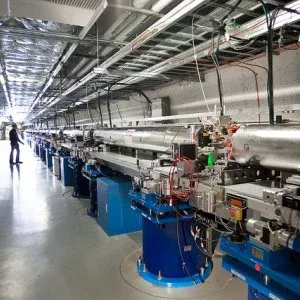
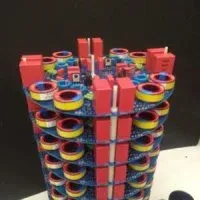
High Voltage Power Supply/Modulators
SLAC has remained a world leader in high voltage power supplies and modulators for several decades. We designed, built, and power supplies ranging from 1MW average power to over 1 GW peak power as well as 10’s of ns and 1us pulsers to CW power supplies. In addition, we specialize in very high voltage design and implementation: up to 500 kV. Our skilled implementation has led to several systems becoming the standard for next-generation accelerators. For example, the SLAC P2 Marx is included as the baseline for the proposed International Linear Collider.
Low Level RF Design
System level RF conceptual design and architecture starting from physics requirements through hardware implementation. Algorithm development and firmware implementation of feedback and signal generation and processing. Design of board level high frequency, low noise, broadband and high dynamic range RF systems. Low phase noise RF sources, measurement and feedback systems.
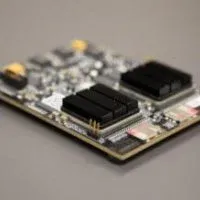

RF Material Science
We are developing a system to probe changes in the material surface structure during the application of a high field RF pulse by employing temporally resolved (tens of picoseconds) x-ray diffraction. X-ray diffraction provides a non-invasive, direct measurement of strain profiles when utilized in a grazing-incidence geometry. This will be the first ever RF pump x-ray probe experimental system capable of spanning frequencies from gigahertz to terahertz and operating at a few Kelvin to room temperatures. We also conduct test with normal and superconducting RF materials to improve our accelerator technology.
RF Sources (Design, Fabrication & Testing)
RF sources are a key driver the size and performance of accelerators, radars, telecommunications systems and satellite platforms. The SLAC TID team is uniquely qualified to bring the novel vacuum electronics (VEDs) concepts to experimental validation. The demonstration of VEDs requires the development and integration of a variety of technology maturity levels, combining fundamental research with the unique facilities and capabilities of a National Laboratory with a longstanding reputation for RF source development.
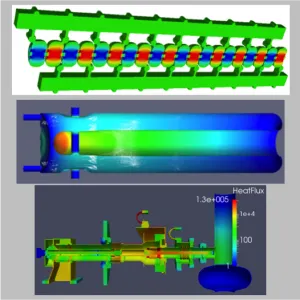
Virtual Prototyping/ACE3P
SLAC’s parallel multi-physics simulation suite ACE3P employs 3D finite element methods on curved conformal unstructured meshes with high-order field representation for integrated electromagnetic, thermal and mechanical modeling. Executing on state-of-the-art massively parallel computers, ACE3P allows large-scale, high-fidelity simulations of realistic structures with unprecedented accuracy.
